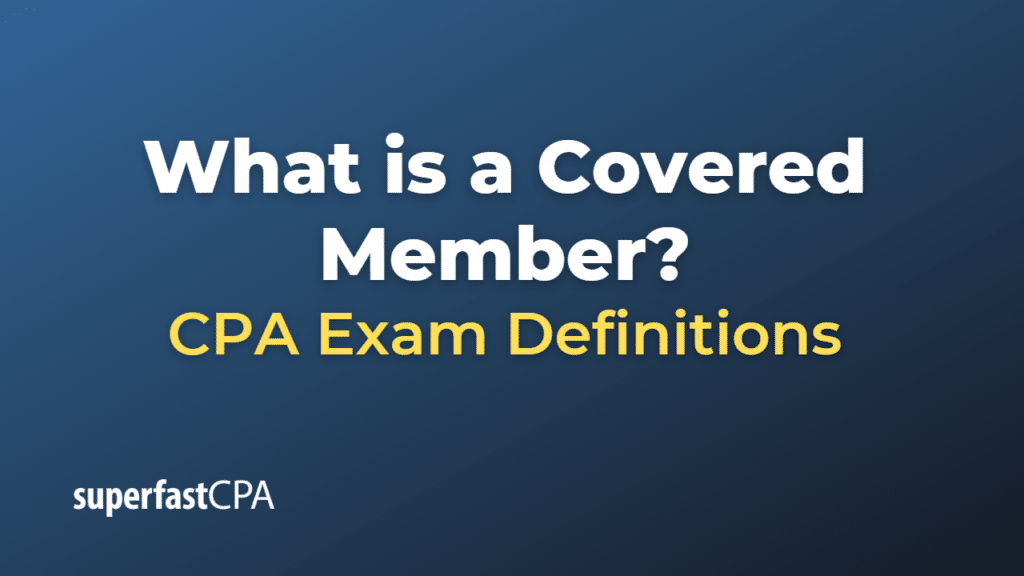Covered Member
A “covered member” generally refers to an individual who is protected under a specific insurance policy or plan. This term is often used in the context of health insurance, where a covered member refers to the individual or individuals who receive benefits under a health insurance policy. This could include the policyholder themselves, as well as any dependents or other individuals included in the policy.
For example, in a family health insurance plan, the covered members might include both parents and their children. In a group health insurance plan provided by an employer, the covered members could include the employees and possibly their dependents as well.
In a different context, such as a professional organization or governing body, a “covered member” could refer to individuals who are subject to certain rules or codes of conduct. For instance, in the context of the American Institute of Certified Public Accountants (AICPA), a covered member refers to individuals in a position to influence the subject matter of the engagement, including those who provide nonattest services that directly support the subject matter.
As you can see, the specific definition of a “covered member” can vary depending on the context, so it’s important to understand how it’s being used.
Example of a Covered Member
Here’s an example in the context of a health insurance policy:
Let’s say Sarah purchases a family health insurance policy. The policy includes coverage for herself, her spouse Tom, and their two children, Alice and Jack. In this case, Sarah, Tom, Alice, and Jack are all “covered members” under the policy. This means that the health insurance policy will help cover the costs of medical care for all of them, according to the terms and conditions of the policy.
Another example, in the context of the professional conduct:
Consider a Certified Public Accountant (CPA) firm engaged in an audit of a company. In this case, the “covered members” as defined by the American Institute of Certified Public Accountants (AICPA) would include not only the auditors directly involved in the audit, but also any other individuals in the firm who could influence the outcome of the audit. This could include senior partners in the firm, or anyone else who might review or supervise the work of the audit team. These covered members would be subject to certain rules of conduct and independence to ensure the integrity and objectivity of the audit.













